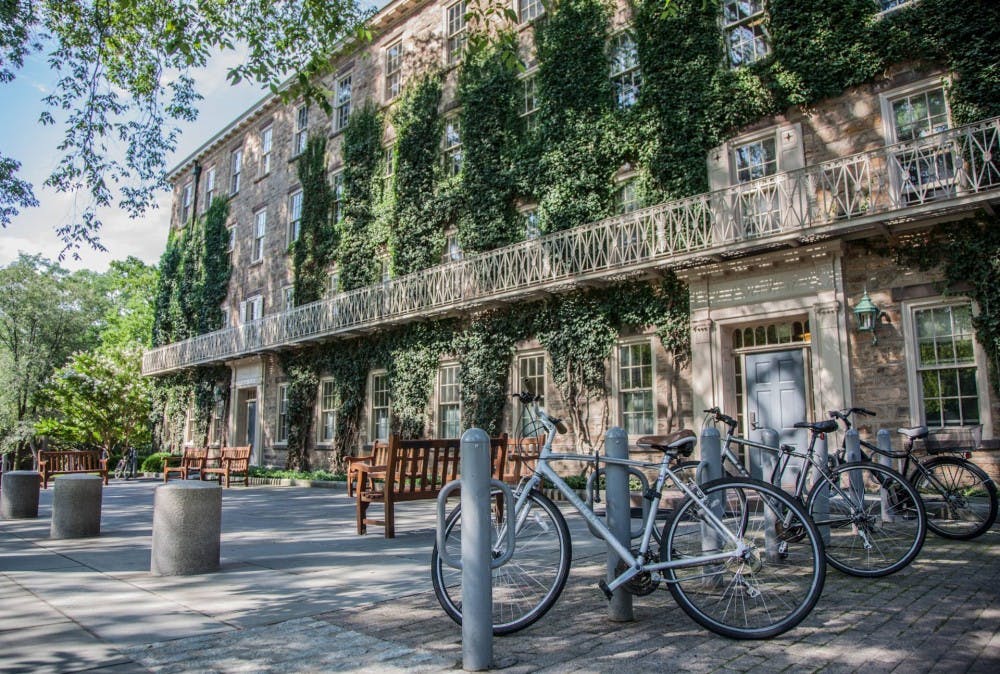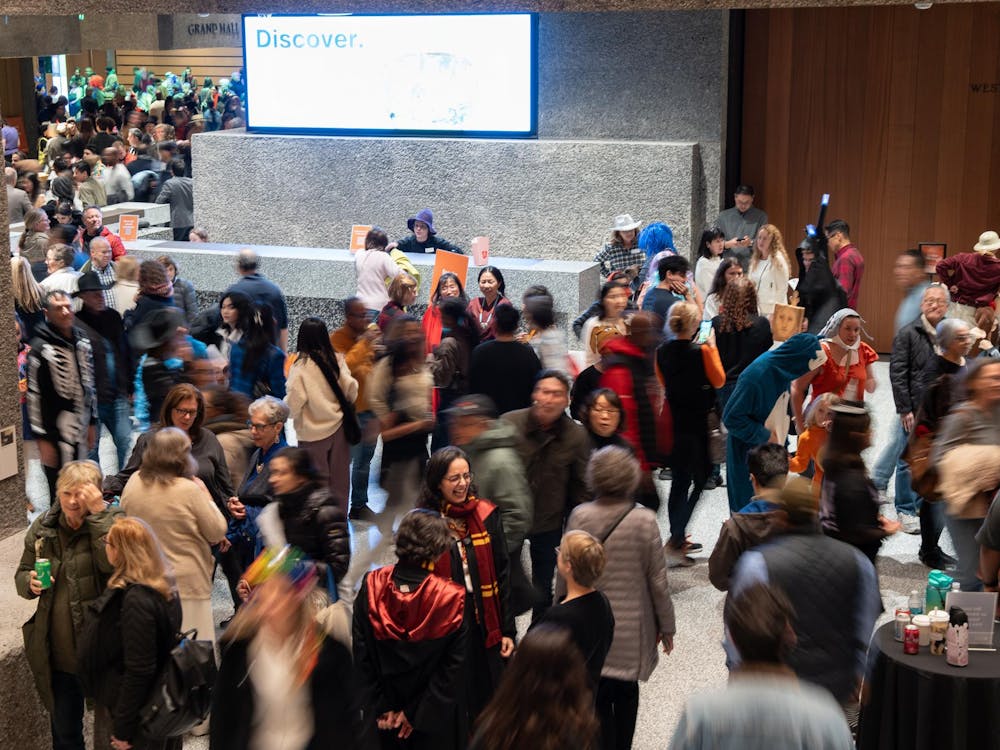On Tuesday, April 6 at 7 p.m. EDT, the University formally extended offers of admission to 1,498 students for the class of 2025 amid a historic application cycle upended by the COVID-19 pandemic and unprecedented disruptions to high school coursework.
The decisions represent a record-low acceptance rate of 3.98 percent and the sharpest year-to-year drop in over a decade. Due to over 200 students formerly in the class of 2024 requesting to defer their enrollment by one year over the summer, the total number of admits is around 20 percent lower than it would otherwise be in an ordinary year.
With the temporary suspension of standardized test score requirements and elimination of the Early Action application option this cycle, all 37,601 applications received were submitted through the Regular Decision process. This record-breaking pool represents an increase of 4,765 over the previous year — or 14.5 percent — and a 6.5 percent increase over the previous record set in 2018 by the class of 2022. The increase also surpasses the 11 percent spike in applications across the board reported by the Common App this year.
Dean of Admission Karen Richardson ’93 attributed the increase in applications partially to greater outreach through virtual visits despite the interruption in University-sponsored travel.
“We were able to reach more high schools — and probably more and different students that we might have had we been physically on the road,” she told The Daily Princetonian in an interview.
The Admission Office reported 574 virtual visits in the past year, including to 387 schools that were not visited in the previous year.
Though the early action admission program will be reinstated for next year’s cycle, the suspension of the standardized testing requirement will be maintained for applicants seeking admission to the class of 2026. However, Richardson says there is no intention to make this change permanent.
“We still see standardized testing as one important piece of a holistic process,” Richardson explained. “It’s not the only piece, but it can be very helpful to us to help predict how students will thrive here academically.”
She continued, saying that the holistic process employed by the admission team — which places each student in their “individual context” — is more important than ever given the variable academic and extracurricular disruptions experienced by students.
“There was an opportunity for students to talk about the disruption that COVID-19 had on their academics or their extracurricular or on family,” Richardson said. “And so we definitely made sure to read those pieces of an application before we even go into everything else.”
The Office of Admission also considered the context of the high school students attended more broadly according to Richardson, looking at average scores at specific schools and whether students had access to standardized test preparation services, among other factors.

“We also, as we do every year, paid special attention to teacher recommendations, where schools were given the opportunity to tell us how things within the school have changed,” Richardson said.
The pandemic also impacted how the admissions team considered extracurricular activities.
“A lot of what students might have been doing in their first year, in their second year, and even in their third year in high school, they just weren't able to do this year,” Richardson said. “And again, that was okay.”
In light of the challenges resulting from the pandemic, Richardson said she believes it has only “reinforced the importance of holistic admission” and the importance of “taking the full student and everything that is presented to us … into consideration.”
Though peer institutions like Harvard and Yale continued to offer an early admission cycle — and saw even larger jumps in applicant numbers — Richardson stood by Princeton’s decision to suspend its process as the “right thing for us to do.”
“We realized that going into the fall, it was going to be difficult for seniors and their teachers and their counselors to be able to put together their best applications by November 1st,” she said, adding that it would be difficult for students to have access to their teachers and for counselors to write letters of recommendation and prepare transcripts.
“A number of high school counselors actually thanked us for deciding not to have our Early Action round this year because they didn't have access to their students,” Richardson added.
She also pushed back against the widespread perception that schools are trying to maximize application numbers and minimize acceptance rate.
“Our goal is never to just drive up the number of applications in order to say no to more people and drive down the admission rate,” Richardson said. “If anything, we are trying to get the word out to students who might not think about Princeton as being an opportunity for them.”
She added that virtual recruitment this year allowed for the admission team to access more rural areas — and to areas with students from lower socioeconomic backgrounds.
“When we're thinking about recruitment, we’re thinking about how we can get the word out to people who might not know about Princeton, and the generous financial aid and the support that we give to students in order to ensure they can be successful here,” Richardson said.
Applicants this year come from 12,298 high schools across 164 countries, while the admits hail from all 50 states, Washington, D.C., Guam, Puerto Rico, and the U.S. Virgin Islands, as well as 73 other countries. International students comprise 14 percent of the total admitted population and 64 percent of students come from public schools.
Nearly 100 students were admitted in December of last year through the QuestBridge National College Match program, which the University recently transitioned to a binding process.
Of the admitted students, 52 percent are women and 48 percent are men. Twenty-four percent of admitted students indicated they want to study engineering, 15 percent expressed interest in the humanities, and seven percent are undecided. Ten percent of the admitted students are children of Princeton alumni. Sixty-eight percent of U.S. citizens and permanent residents admitted self-identified as people of color, including biracial and multiracial students.
Richardson acknowledged that the large overlap in applicants with Ivy League peer institutions — many of which have seen even larger increases due to their Early Action rounds — will make it even more difficult than ever to predict the yield as well as the size of their waitlist.
Throughout the month of April, admitted students will be invited to join a private admitted student community and engage with future classmates, current students, faculty, and staff in discussion groups.
Students and their families will also be invited to attend virtual events such as panels, an activities fair, and walking tours hosted by Orange Key.
“We’re giving our current students the microphone to talk about why they chose Princeton,” said Mary Alexander, program coordinator of First-Year Orientation and First-Year Families Weekend. “Different groups on campus will have the opportunity to really showcase the activities that they do, and the talents that they have on campus.”
Alexander added that there are also opportunities for admits to have one-on-one conversations with current students, and special programming for families where parents and guardians can “ask the questions that they wouldn't necessarily want to ask in front of their student.”
“We’re doing our best to really give students the opportunity to learn as much about our campus as they can,” she added. “And we’re excited about it.”
Admitted students will have until May 3 to make a decision. Students offered a place on the waitlist will have until the same date to accept their spot on the list.
This story is breaking and will continue to be updated as more information becomes available.








